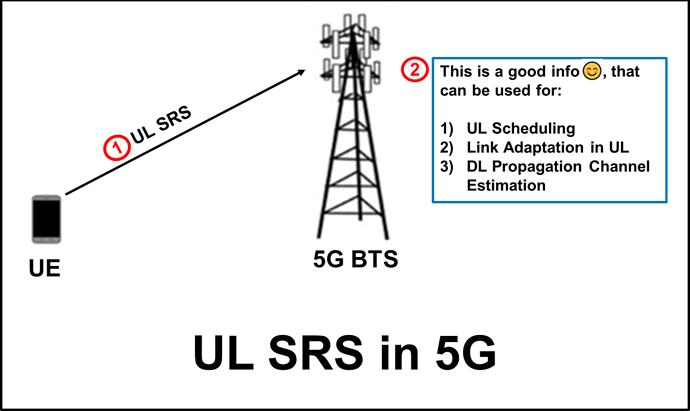-
My friend: Hi Ibrahim, I have a question for you.
- Me: Please, go ahead.
-
My friend: I was wondering what is the benefit of SRS in 5G, do you have any idea about that?
- Me: SRS (Sounding Reference Signal) is a reference signal that is sent by the UE in the UL direction according to some instructions from the 5G BTS. So, simply when the 5G BTS receives the SRS from the UE, then the 5G BTS will have an idea about the UL propagation channel of each resource block inside the active bandwidth part and hence the packet scheduler can select the best resource blocks to allocate for the UE inside the whole system bandwidth assuming that the active bandwidth part is configured to use the full bandwidth. Also, UL SRS SINR can be measured and so this can be used as an input for the link adaptation when determining the proper UL MCS.
-
My friend: So, we can say that SRS is useful only for the UL direction, right?
- Me: No, because the 5G BTS can use this UL information and apply it for the estimation of the DL propagation channel as well when the reciprocity exists as in TDD for example and as you know most of the 5G deployments are using TDD which makes it very helpful for the 5G networks.
-
My friend: But, DMRS is always sent in UL direction with PUCCH and PUSCH channels and it can be used to provide information about the UL radio channel, so why SRS is still used?
- Me: DMRS is used to provide information about the coherent demodulation and channel estimation of the frequency region which is being used by the PUCCH and PUSCH specifically, however SRS is providing information about the whole bandwidth not a specific part of the bandwidth.
-
My friend: Thank you very much. You made it very clear.
- Me: You are most welcome.

Source: Ibrahim Sayed, PMP on LinkedIn: #5g #5gnr #5gtechnology | 26 comments